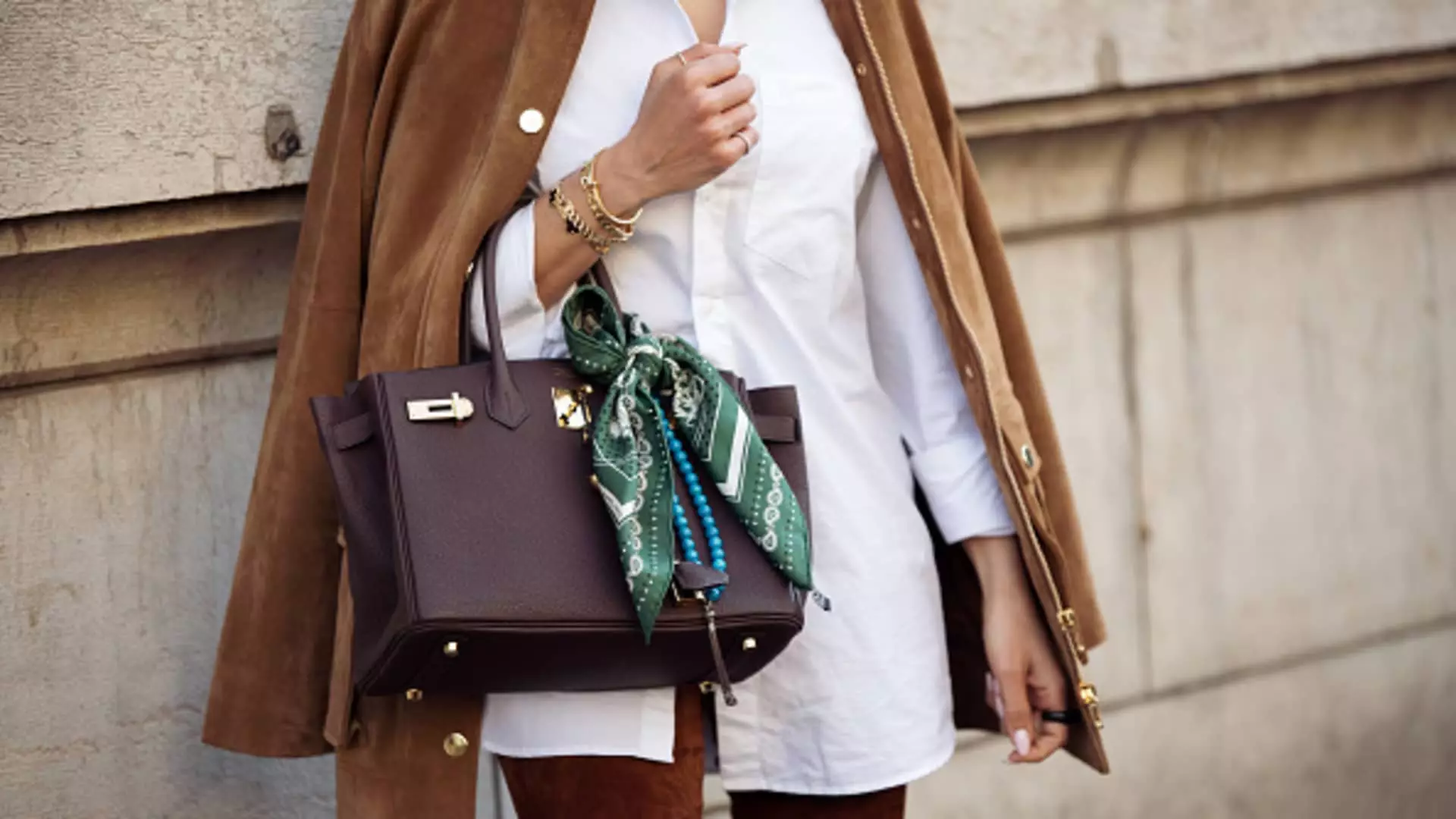The luxury market often appears impervious to economic troubles, yet the recent pricing strategy by Hermès serves as a vivid reminder of the tenuous balance these brands must maintain. As the French luxury powerhouse prepares to raise U.S. prices starting May 1 to counteract the effects of tariffs imposed by the Trump administration, the implications stretch beyond mere commerce. This decision signals a robust stance against a backdrop of economic uncertainty, but also expresses a troubling reality: luxury brands must navigate the choppy waters of political and economic currents as they endeavor to maintain their lofty status in a fluctuating market.
Shifting Price Tags and Consumer Psychology
Hermès is not simply auctioning off products; they are selling status, exclusivity, and identity wrapped in fine leather and silk. The development of a price increase uniquely aimed at the U.S. market highlights how deeply intertwined fashion and politics have become. The fine line between luxury and ineffectiveness is breached as consumers, already battling global inflationary pressures, now face inflated Hermès prices as they struggle to justify expenditures on high-end items. Prices on handbags, once viewed as timeless assets, will now reflect a premium that feeds off the undercurrents of government policy.
There’s an irony in this situation; while the affluent may be naturally inclined to absorb small price spikes, the notion that these luxuries must now account for political decisions exposes cracks in the facade of untouchable brands. Customers might find themselves questioning whether these price increases are merely a necessary adjustment or an exploitation of perceived wealth that characterizes luxury consumption.
Branding and Market Positioning: A Calculated Gamble
Hermès’ recent price adjustments may appear strategic, especially given the company’s recent achievement as the largest luxury firm by market capitalization, surpassing LVMH. However, such a position requires relentless vigilance against external variables. LVMH’s recent struggles reveal that even insiders in the luxury sector can falter, as signs of decreased sales reflect growing uncertainty among consumers. The question arises: can a brand with a storied legacy like Hermès thrive amidst such upheaval?
This delicate balancing act raises the stakes for Hermès. The inflationary pressures make it essential not only to ensure continued brand loyalty among existing customers but also to attract new, affluent clientele. The risk of alienating potential buyers is indisputable; price increases could repel those seeking high-quality goods at quieter luxury prices. Therefore, success hinges not just on the product’s craftsmanship but also on how well Hermès can communicate its value proposition against the backdrop of mounting costs.
Consumer Impact: The Broader Picture
As CEO Eric du Halgouët highlighted, the price hikes are slated exclusively for the American market to offset a 10% universal tariff. The reality most consumers are unaware of is the web of complexities that drive these decisions. The increase not only impacts Hermès shoppers but reveals broader truths about economic conditions and public policy impacting affluent consumers across various sectors, including cars and electronics.
Amid a sea of rising prices, the once-invulnerable luxury sector may face challenges in the form of reduced consumer spending power. Buyers who previously scoffed at price tags may start to look more thoughtfully at their choices, rationalizing purchases or shifting to brands that offer similar prestige at a lower cost. Luxury brands must evolve beyond being merely synonymous with wealth; they must resonate with values and identities consumers aspire to, especially in economically turbulent times.
Hermès’ unwavering commitment to its products amid tariff-related price increases begs crucial questions about the future of luxury consumption and branding. It remains to be seen how consumers will react in an environment of rising costs and financial insecurity. Will Hermès stand steadfast, or will it falter in attempts to uphold its premium identity? As luxury goods become increasingly intertwined with economic realities, the brand and others in the sector must navigate consumer sentiments even while maintaining an avant-garde image. As we look ahead, one must wonder whether these moves reflect resilience or a brewing bubble ready to burst under the weight of inflation and consumer disillusionment.

